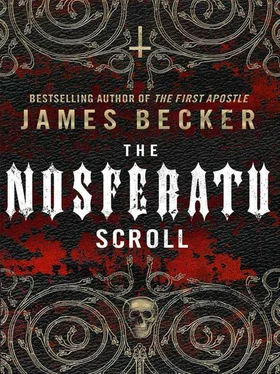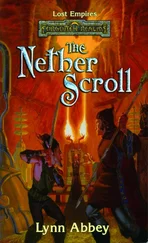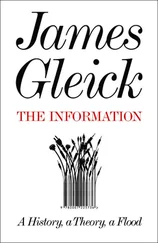James Becker - The Nosferatu Scroll
Здесь есть возможность читать онлайн «James Becker - The Nosferatu Scroll» весь текст электронной книги совершенно бесплатно (целиком полную версию без сокращений). В некоторых случаях можно слушать аудио, скачать через торрент в формате fb2 и присутствует краткое содержание. Жанр: Триллер, на английском языке. Описание произведения, (предисловие) а так же отзывы посетителей доступны на портале библиотеки ЛибКат.
- Название:The Nosferatu Scroll
- Автор:
- Жанр:
- Год:неизвестен
- ISBN:нет данных
- Рейтинг книги:4 / 5. Голосов: 1
-
Избранное:Добавить в избранное
- Отзывы:
-
Ваша оценка:
- 80
- 1
- 2
- 3
- 4
- 5
The Nosferatu Scroll: краткое содержание, описание и аннотация
Предлагаем к чтению аннотацию, описание, краткое содержание или предисловие (зависит от того, что написал сам автор книги «The Nosferatu Scroll»). Если вы не нашли необходимую информацию о книге — напишите в комментариях, мы постараемся отыскать её.
The Nosferatu Scroll — читать онлайн бесплатно полную книгу (весь текст) целиком
Ниже представлен текст книги, разбитый по страницам. Система сохранения места последней прочитанной страницы, позволяет с удобством читать онлайн бесплатно книгу «The Nosferatu Scroll», без необходимости каждый раз заново искать на чём Вы остановились. Поставьте закладку, и сможете в любой момент перейти на страницу, на которой закончили чтение.
Интервал:
Закладка:
She paused for a moment to collect her thoughts, then spoke again. ‘If you search the literature, belief in vampires, or creatures that act in some way like vampires, seems to be endemic. Almost every culture, on every continent, has some kind of a legend of this type. And that includes places you wouldn’t normally expect, like Australasia and China, and even Mexico and the Caribbean.
‘And it wasn’t actually Bram Stoker who first wrote about it. In eighteen sixteen, almost a century before Stoker, Lord Byron was holidaying near Lake Geneva with friends and suggested they each write a ghost story. Byron came up with the idea of a tale about a vampire and one of his friends, in fact his personal physician, a man named John Polidori, picked it up and expanded it. This was the first time a vampyre — he spelt the word with a “y” instead of an “i” — had appeared in a piece of fiction written in English. But nearly a century earlier, in seventeen thirty-two, the word “vampyre” had first appeared in print in Britain, but then the word was being used as a political symbol.’
‘How come you know so much about vampires?’ Bronson demanded.
Angela grinned at him. ‘I read a lot,’ she said. ‘Anyway, what I was going to say was that even as late as the first millennium, the world was still a very mysterious place, and people were looking around for explanations for natural phenomena that we now understand perfectly. They still believed that prayers to a god or spirit, or even a sacrifice, were absolutely necessary to ensure the rising of the sun or a good harvest, and the end of winter was still greeted with relief and celebrations. That was the kind of climate in which belief in vampires first arose, when superstition and belief in supernatural events and beings were the norm, not the exception.’
‘But a bloodsucking creature of the night? Where the hell did that come from?’ Bronson objected.
‘Nobody knows. It’s been a part of the folklore of Europe, and especially of central Europe, since records began. But it’s possible that this kind of creature was first assumed to exist as a reasonable explanation for something that otherwise made no sense.’
‘Like what?’
‘Post-mortem changes to a body, for instance. If for any reason a grave was opened a short while after the burial had taken place, the people who looked at the corpse wouldn’t have understood what they were seeing. There might well be blood in and near the mouth, and the hair and nails would have grown, and the body would appear to be plump and well nourished. Medical science now knows exactly why these strange effects occur. After death, blood may be expelled from all orifices, not just the mouth, as a normal part of the decay process. The receding skin can make the hair and nails of the corpse appear longer, and the gases created by decomposition will bloat the body — you know that.’
Bronson nodded. As a policeman, he’d grown used to seeing corpses in varying stages of decay.
‘Now put yourself in the position of somebody who’s just opened a fresh grave. You see a corpse that looks well fed, with hair and nails growing, and with blood on the mouth and face. Knowing nothing about what is actually happening inside the dead body, the most reasonable explanation might be that the corpse isn’t a corpse at all, and that somehow it’s managing to escape from the grave at night and is feeding on the blood of living things, hence the blood around its mouth. And if somebody in the neighbourhood is suffering from anaemia or consumption or some other wasting disease, you might also conclude that that person was the victim. Even the unexplained deaths of cattle or sheep might be attributed to the actions of a vampire.
‘And that’s probably all it would take for the legend to be born. As far as I know, nobody knows exactly when belief in vampires first started, but it quickly spread all over Europe, and was concentrated in Hungary and the Slav countries in the early eighteenth century. It was probably those legends that Byron, and later Bram Stoker, picked up on. And we do know that the word “vampire” itself was derived from the Serbo-Croat word vampir , and it entered the English language through either French or German, probably also in the eighteenth century. It’s also true that many of the other Slavik and middle European languages, like Bulgarian and Croatian, had very similar words to describe the same phenomenon. But the actual root of the word probably comes from the Old Russian word upir , which was first recorded in the eleventh century.’
‘And what about crucifixes, garlic and a stake through the heart?’ Bronson asked.
‘You can thank Bram Stoker and Dracula for that,’ Angela said, ‘though I suppose the crucifix and the stake do make some kind of sense. A body arising from the grave to feed on the living is obviously demonic, and people might well think that such a creature would be frightened away by the symbol of the Christian religion. Driving a stake through the chest would destroy the heart and prevent it from circulating the blood, and that would kill the vampire as well. There’s another theory that impaling it with a stake would pin the vampire’s body to the earth and stop it moving.’
‘And garlic?’
‘I’ve no idea, but garlic was supposed to be a cure, or at least a preventative, for the plague, so there might be a link there. Actually, garlic’s been renowned as a deterrent against vampires in almost every culture that has legends about the creatures, but nobody seems to know why that should be. And before you ask, I’m fairly certain that vampires being destroyed by sunlight, not being visible in a mirror and not casting a shadow are all either creations of Mr Stoker’s imagination or embellishments added by later writers.’
‘Are you saying that vampires were linked to the plague?’ Bronson asked.
Angela nodded. ‘At one time, almost everything was linked to the plague. The Black Death arrived in Europe in the middle of the fourteenth century, and nobody had the slightest idea what caused it. All they knew was that it was incredibly contagious, and that once you’d got it, it was effectively a death sentence. Wild theories abounded about the possible cause, everything from an unfavourable alignment of the planets to earthquakes that released foul air from the interior of the earth, and even a kind of ethnic cleansing orchestrated by aliens.’
‘You’re kidding.’
‘I’m not. There were numerous reports of evil-looking, black-clad figures standing at the edges of towns waving a kind of wand that emitted a noxious fog, and anyone that the substance touched subsequently died of the plague. The accounts sound remarkably like descriptions of men wearing protective suits dispensing a chemical or biological weapon through some sort of pressurized dispersal system. Witnesses described the strangers as acting as if they were scything, swinging the wand from side to side, and it’s actually that image which gave us the expression “the grim reaper”.’
‘Your breadth of knowledge never ceases to amaze me,’ Bronson said.
Angela smiled at him. ‘Well, history is my thing,’ she said. ‘It’s the minutiae, the details, which have always fascinated me. In some countries, particularly in Germany and Switzerland, the Jews were blamed for the plague, and records show that there were several massacres in which they were rounded up and killed, sometimes by being burned alive. Religious zealots believed the plague had been sent by God, and for some time flagellation became a popular cure. Travelling bands of flagellants roamed Europe, flogging themselves in the name of God, and in many cases very efficiently helping to spread the plague at the same time.
Читать дальшеИнтервал:
Закладка:
Похожие книги на «The Nosferatu Scroll»
Представляем Вашему вниманию похожие книги на «The Nosferatu Scroll» списком для выбора. Мы отобрали схожую по названию и смыслу литературу в надежде предоставить читателям больше вариантов отыскать новые, интересные, ещё непрочитанные произведения.
Обсуждение, отзывы о книге «The Nosferatu Scroll» и просто собственные мнения читателей. Оставьте ваши комментарии, напишите, что Вы думаете о произведении, его смысле или главных героях. Укажите что конкретно понравилось, а что нет, и почему Вы так считаете.












